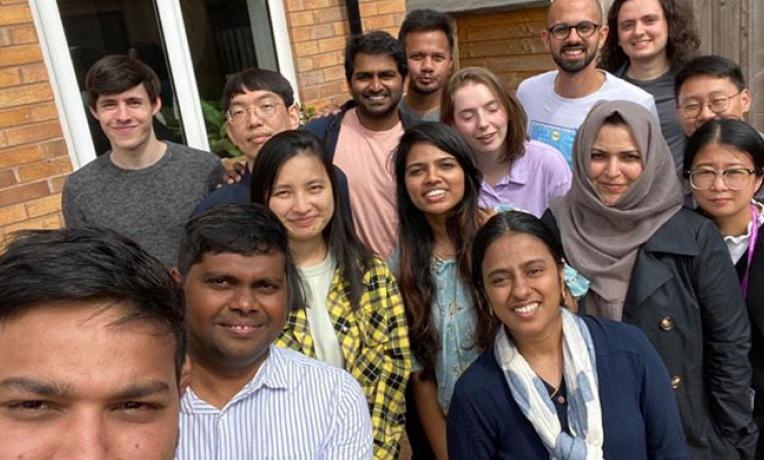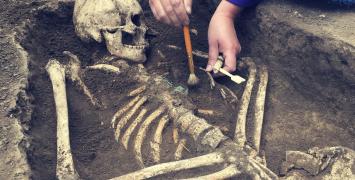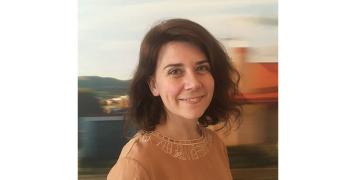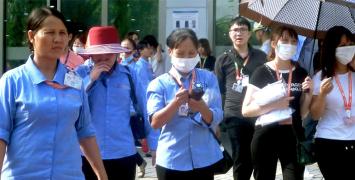Researching water and flowing between continents

As part of a series of interviews with researchers who have moved from other continents and countries to work in Europe, we spoke to Radha Boya, originally from India.
| Dr. Radha Boya is a leading researcher in the field of nanofluidics, a chair (hon.) in nanoscience, and Royal Society University Research Fellow in the Department of Physics & Astronomy at the University of Manchester. She leads a research team of 12 members, working on 2D materials, angstrom (Å)-scale fluidic devices. She was recognized with FRSC (2021), RSC Marlow award (2020), featured in MIT Tech Review‟s “Innovators under 35” list, and as UNESCO-LOréal International Rising Talent in 2018. In 2019 Dr Boya received an ERC Starting Grant to fund her project AngstroCAP. |
You started your academic career in India, then moved to the US. Currently you are pursuing your research in the UK. Is mobility beneficial in your field?
Moving across continents helped me gain new technical skills, leadership, and working style (different environments and cultures). It also helped me a lot in building my research network, not only in these countries but across the globe, via collaborations.
What motivated you to apply for an ERC grant?
Many of the scientists whose inspirational research works I follow, read and cite have an ERC grant. Since landing an independent position, I have been planning and preparing for an ERC grant application. Several of my colleagues at my university including my collaborators have told me about the freedom offered by ERC grant to work on something that truly fascinated you. So, I applied for an ERC Starting Grant (StG) as and when I felt I had a good chance of getting the grant, with a clear scientific idea.
Could you describe your project in layman’s terms and explain how it will contribute to your field of research?
Water is the most abundant liquid on Earth. Essential for life, it is part of nearly every single biological, geological and (electro) chemical process. However,
the structure and dynamics of the hydrogen-bonding network in water still hold mysteries.
the structure and dynamics of the hydrogen-bonding network in water still hold mysteries. My ERC funded research project will develop new capillary devices to investigate the structure and dynamics of water.
These devices are in a lab-on-a-chip type configuration with angstrom-scale channels and atomically smooth walls. The project will assemble capillaries of a few microns in length, by sandwiching two blocks of layered crystals, separated by an atomically thin 2D-crystal spacer stripes. Inside these channels, the dynamics of water flows will be investigated, along with that of water-salt solutions. We study size selective sieving of ions and molecules using these channels to probe desalination mechanisms, from a fundamental science perspective.
Can you talk a little bit about “gender balance” in your field?
In my field, which spans both physics and materials science, although there are prominent women researchers, numbers are still low. About 30% of postgraduate research students in my department are female, and the ratio goes down to 18-19% when it comes to faculty. This scenario is more or less similar in higher education across the UK. In my home country India, the latest surveys point to about 40% of the PhD students as female, which is a good news. However, even in the most eminent institutions the female faculty members are surprisingly low in number.
In my own laboratory, I have been trying to maintain gender balance. Among my five PhD students, three are women. If everyone is carefully doing their bit when they are in recruiting roles, I believe we will head toward achieving good gender balance at all levels.
Do you maintain research ties with institutions in India?
I pursued my PhD from India and several of my former colleagues are now faculty in India. I have an active collaboration with IIT Gandhinagar. On a regular basis, I do outreach activities via online talks and interaction with students in India. During lockdown last year and again this year, I spoke and interacted with undergraduate and A-level students in the program “Seeding Nanoscience in Young Minds” – Live Interactive session with school and college students (~300 students on zoom, streamed YouTube live), about nanoscience, graphene, and my particular work.
I am part of the University of Manchester’s Gender Advancement for Transforming Institutions (GATI) team, led by Dr Laura Richards. GATI is an initiative of Department of Science and Technology India, partnered with the British Council. Its aim is to introduce a gender equality framework, drawing upon successful models in the UK, namely Athena Swan. Our university will be paired and work together with a higher education institute in India.
Would you encourage researchers from the region to apply for an ERC grant? If so, do you have any advice?
I would definitely encourage applying for an ERC grant. An ERC grant enables rapid recognition. Success in getting an ERC grant is mainly centred around your Science and you. It not only gives flexibility in recruiting the most talented researchers around the globe to build a dedicated team, but also allows the PI to move the grant between eligible host institutions during the length of the grant.
So, go for it! It is a major grant and supports excellent science. It may well be a transforming point of one’s career, as it has been for me. With the flexibility and advantages offered by an ERC grant, it is possible to apply as a principal investigator if one can spend at least 50% of the time in an EU member country.
If you would like to ask Radha Boya’s about her career path, or learn more about ERC funding opportunities for researchers in India and ASEAN countries, you can watch a dedicated webinar that took place on 30 September 2021. This information session is organised in conjunction with EURAXESS Worldwide, an EU backed initiative supporting researchers working outside of Europe who wish to connect with Europe





